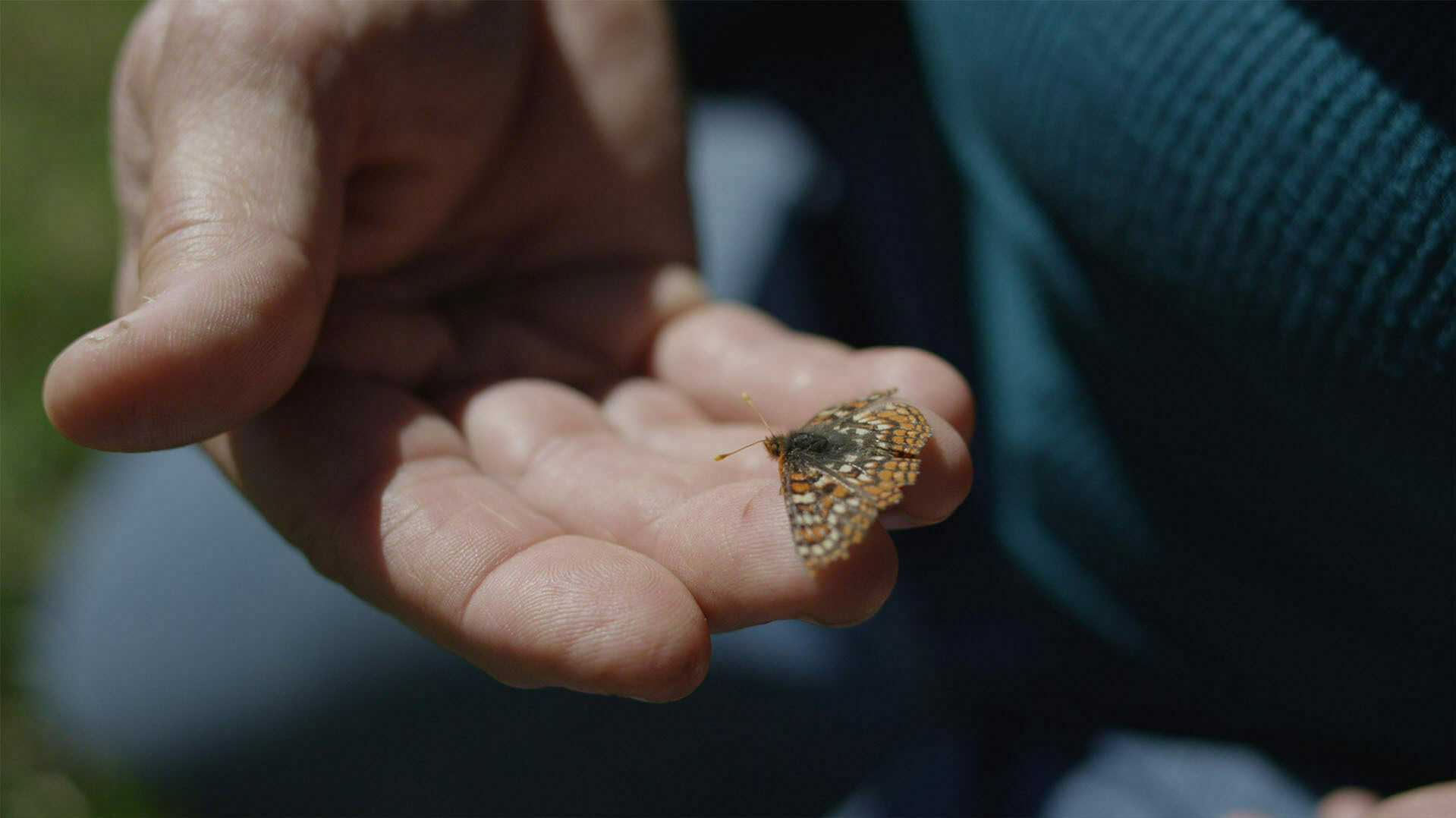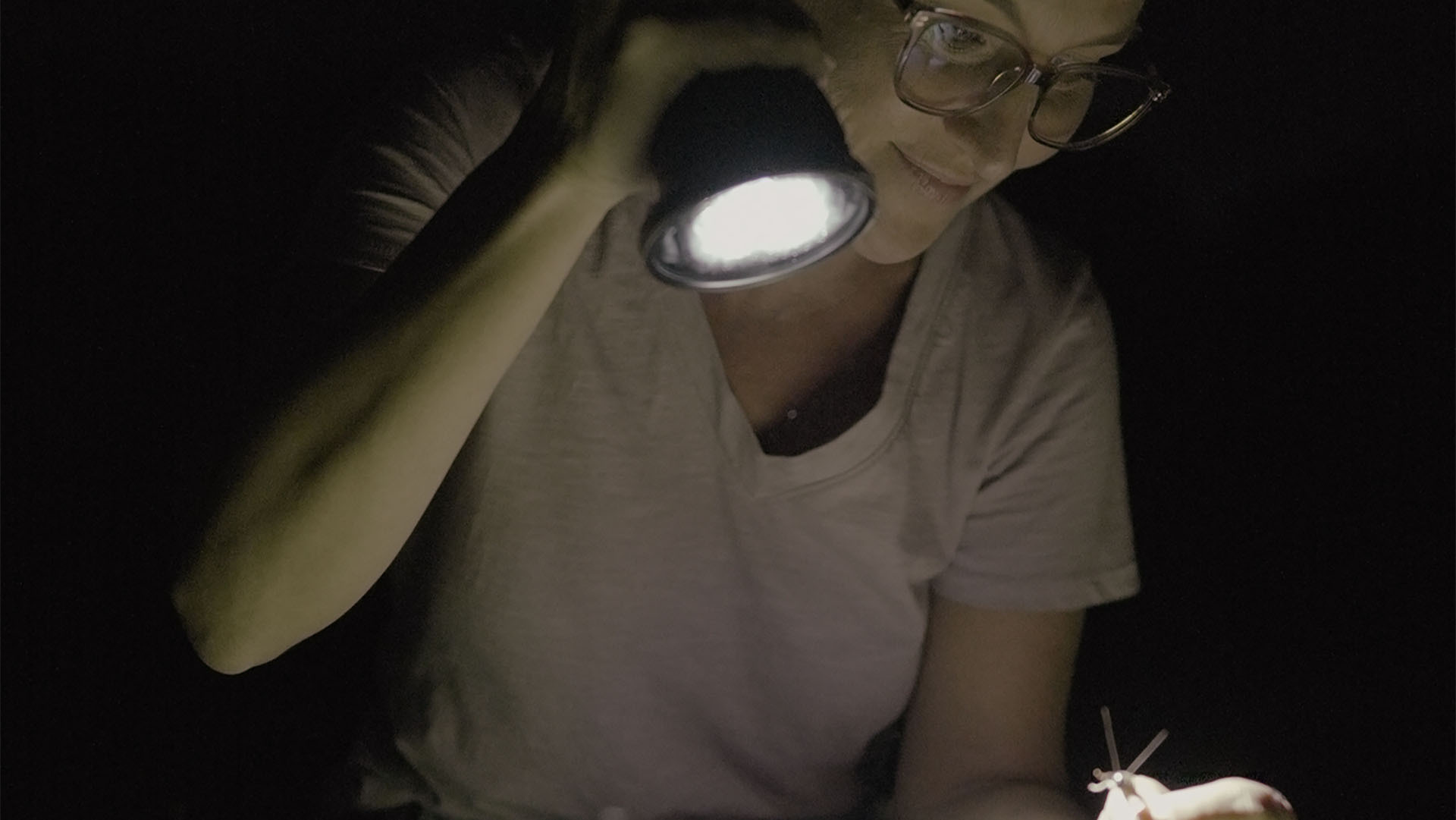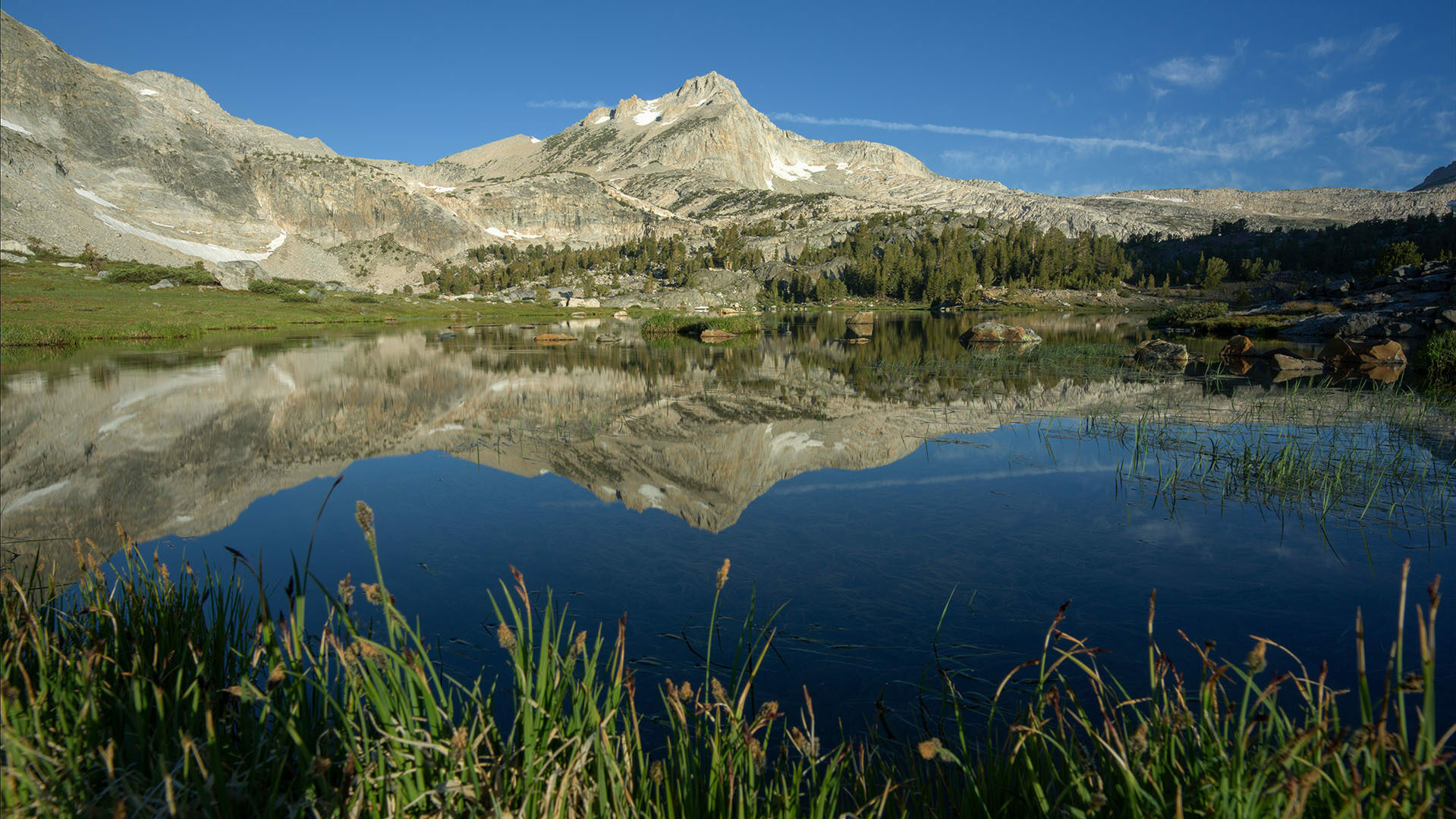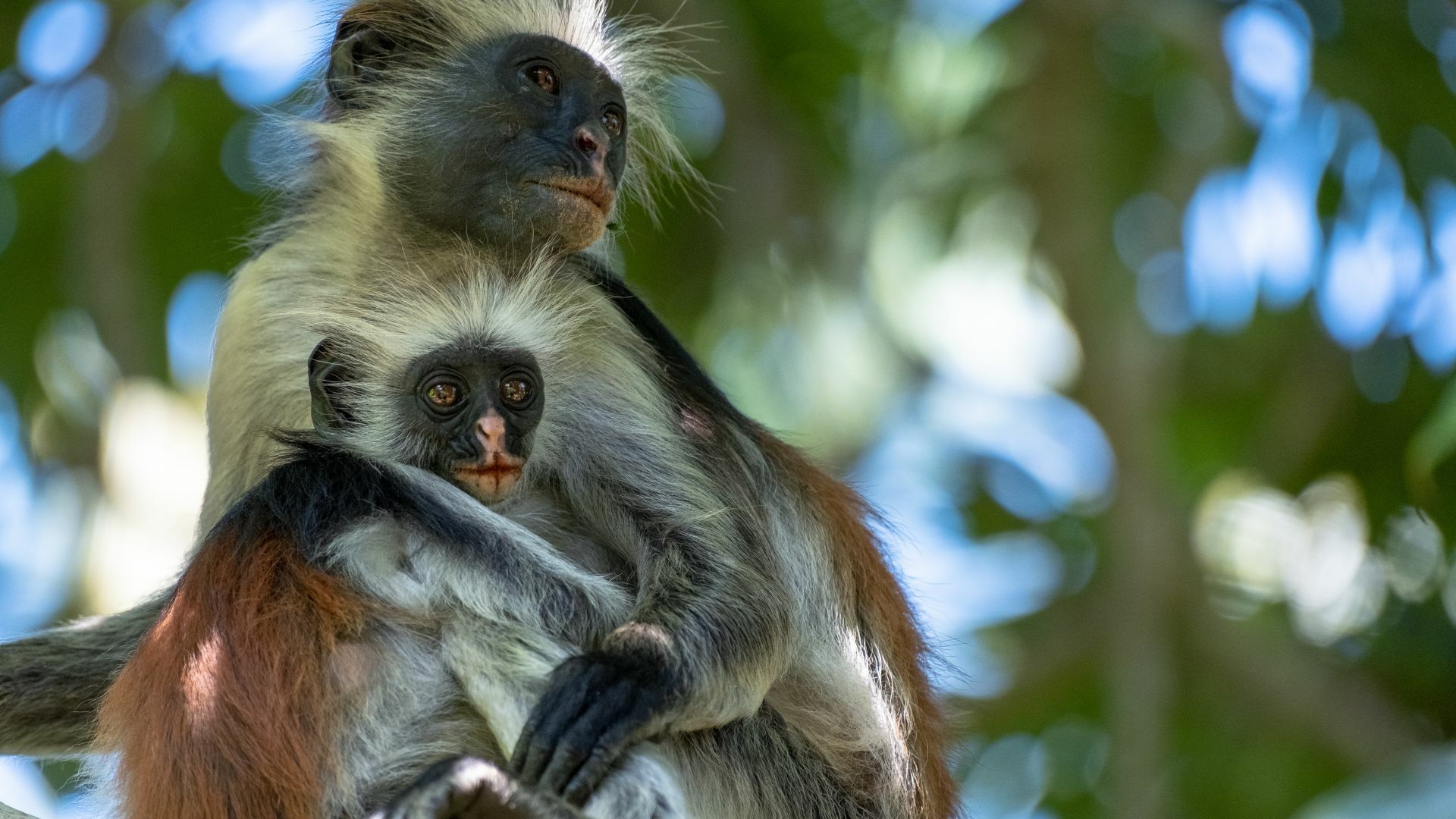Over the years, we’ve turned research, anecdotes and everyday experiences into a whole constellation of stories about the way we impact our world. Still, some voices may be missing from the conversation.
But what if those voices aren’t human at all?
In “Evolution Earth” on PBS, Host and Evolutionary Biologist Dr. Shane Campbell-Staton hands the microphone to those on the front lines: animal species across the globe — and the biologists, ecologists and other experts who speak for them. We interviewed these experts to learn how a few specific species are responding to human influence and what all of us can do to make a difference.
Editor's note: Interviews have been edited for length and clarity.
The Story of Global Change and Human Impact
Environmental changes are a story shared across every species on the planet. The effects vary across locations and ecosystems, but the many significant problems tend to come back to one source: human impact.
Sure, not every change is completely “our fault.” Nature moves and evolves on its own, and it would likely have continued doing so if humans were never here at all. The reality, however, is that we are here — so even natural shifts occur on a playing board of our own design. Essentially, almost nothing happens in the environment without being touched by human hands, activities or ambitions.
“We’re impacting every corner of the globe in some way,” says Shane. “Even the farthest, most uninhabited reaches of our globe are not safe from our influence. In fact, the current age of life is literally defined by our influence on the planet: The Anthropocene — The Age of Humans.”
Now, those impacts aren’t always negative. It’s true that we’re capable of doing so much good — like helping heal the hole in the ozone layer or stopping the spread of invasive species. Unfortunately, we’re equally capable of causing or aggravating environmental problems, including:
- Biodiversity loss
- Habitat destruction
- Expansion of invasive species
- Rising temperatures
- Shrinking glaciers
- Increased carbon dioxide levels
“We’re seeing the consequences of our actions play out in real time,” says Shane. “Species are going extinct at an incredible rate. Natural ecosystems worldwide are being uprooted. Animal populations are being reshuffled around the globe — intentionally and unintentionally — and bringing new challenges for native species.”
If we really want to understand our impact, we can’t get stuck seeing the world through human eyes. Instead, we need to get up-close and personal with the animals experiencing migration, adaptation, modification and even potential extinction in response to human activity.
Human Impact #1: Climate Change
The world started connecting the dots between carbon dioxide and environmental shifts in the late 1930s. Since then, we’ve learned a lot about how our decisions and behaviors can have long-term impacts on the climate — for example, rising sea levels, melting glaciers and increased global temperatures.
Fortunately, two experts from “Evolution Earth” are here to put things into perspective. Here’s how climate change impacts the species they study.
Edith’s Checkerspot Butterflies Moved To New Territory

You may not think of butterflies as particularly strong, but you might be surprised when you meet the Edith’s checkerspot butterfly. This delicate creature has a life cycle of only 10 days and still manages to survive in a snowy environment where even humans would struggle.
Ecologist and Climate Change Expert Camille Parmesan has been fascinated by the Edith’s checkerspot butterfly since 1996, when she started visiting 4,000 sites across the U.S. to track this species’ behavior. She found that, while some populations were going locally extinct, others were thriving in environments where there shouldn’t have been butterflies at all.
It turned out that the insects were moving toward cooler weather and saying goodbye to the heating equator. When the world needed proof that climate change was happening — and that animals were responding to it — Camille and her butterflies delivered.
“This species doesn’t move around much; most individuals die within a hundred meters of where they were born,” she says. “This stay-at-home behavior has allowed the butterflies to evolve a lot of ‘local adaptations,’ meaning that different populations are genetically adapted to live in particular habitats and feed on particular plants.”
This isn’t just fascinating — it’s also a good way for us to learn more about how species respond to increasing temperatures and other changing climate or weather patterns. As Camille explains, “Some populations of Edith’s checkerspot butterflies have suffered a very high local extinction rate with recent increases in droughts, fires and heat waves that are all a part of climate change. But other populations, with different ecologies — different local adaptations — are quite resilient. In general, populations at the highest elevations are doing well, while those in naturally hotter and drier regions are doing poorly.”
Perhaps unsurprisingly, the butterfly isn’t alone in this story of climate adaptation. “More than half the species that exist are being affected by climate change in some way,” she says. “Shifts like warmer temperatures have dramatically changed the habitat and geographic range of many marine fish, trees, birds and butterflies across the world.” She adds that one familiar example is the polar bear, which has had to watch as sea ice melts and tasty seals get more difficult to find.
And it’s not just animals, either. “The impacts are also being directly felt by us humans — not because we are likely to go extinct, but because our food supplies and our level of social organization are sensitive to climate change,” she explains. “The comfortable lifestyles and good health that many of us currently enjoy are set to undergo dramatic and unpleasant shifts.”
Zebra Finches Sing a Unique Song
According to local legend, the zebra finch can save lives by guiding people to water. However, dehydrated humans aren’t the only ones who get a little help from this bird. As Behavioral Ecologist Dr. Mylene Mariette realized, the finch sings a special melody to its unhatched eggs. Research shows chicks that hear the “heat song” are smaller and have a better chance of survival in warmer temperatures.
Although this isn’t a new behavior, it does tell us something important about the finch’s flexibility: “It is because the zebra finch is extremely well adapted to the desert environment that it can, to some extent, cope with climate change,” says Mylene. “Because they evolved in a very arid place and live on a diet of dry seeds that requires them to drink every day, zebra finches are extremely good at finding water.”
Of course, not every species could survive a changing climate in this manner. “They all have unique strategies to cope with heat,” says Mylene, “and they’ll have to become better at it to persist in warming temperatures. How well animals adapt depends on what they eat, how big they are and whether they can use refuges to escape the heat.”
She compares two species as an example: kangaroos and her zebra finches. The former eat grass and leaves, while the latter eat seeds. “Even when the grass has dried out, finches can still find seeds fallen on the ground. They can thrive when the kangaroos are struggling.” She says this could lead to “species with smaller ranges, or less mobile species than the zebra finch, likely going extinct. Whether adaptation can occur faster than climate change is a big and important question, to which we only have the beginning of an answer.”
Does all of this mean that the zebra finch is totally immune to climate change impacts? Unfortunately, Mylene says even this little hot-weather hero is struggling. “It’s doing well compared to many other species, but it’s already starting to be impacted by climate change,” she explains. “Most bird species release heat by panting like dogs rather than sweating like humans, but they reach a point where this isn’t enough. That’s why a huge number of individuals die of dehydration or overheating.”
Human Impact #2: Invasive Species
Invasive species are living organisms that get a little too comfortable in habitats that don’t belong to them. While some may seem too cuddly to cause real chaos — like wild horses or even domestic cats — they can complicate life for native species. For example, these alien invaders may be better equipped to gobble up resources or stalk prey that hasn’t adapted to their unique hunting methods.
What do humans have to do with it? Well, if invasive species are aliens, then we’re their spaceship. Intentionally or unintentionally, we move them around the globe with us — and sometimes we even help them thrive.
Check out this example of the fascinating interactions between native and invasive species.
Pacific Field Crickets Stopped Singing

Deep in the heart of the Hawaiian Islands, the Pacific field cricket once sang a sweet summer song. Unfortunately, a species of deadly parasitic fly had other ideas. This ungrateful concert-goer followed the cricket’s tune for a snack instead of a show.
In response, the cricket stopped singing. As Evolutionary and Behavioral Ecologist Dr. Robin Tinghitella discovered, this was actually a clever and incredibly fast evolution.
Robin found that genetic mutations allowed male crickets to rub their wings together without making noise. Individuals without this “superpower” still attract females with a song; that means the silent crickets can wait nearby and let their noisier counterparts draw in the ladies, then move in at the last minute to mate. While louder crickets may fall victim to the fly, quiet ones can more successfully reproduce and pass on the life-saving mutation.
So, what can this kind of quick thinking teach us about human impacts on the environment? Robin has a few ideas.
“Both the Pacific field cricket and the parasitoid fly were likely brought to Hawaii by humans,” she explains. “We don’t actually know when or how the parasitoid fly got to Hawaii, but because the Pacific field cricket is the main host for the fly there, many scientists believe the flies must have been introduced after the cricket.” However, that’s not the only thing that makes these two species special. “They appear to have been introduced from opposite sides of the Pacific — the cricket from the west and the fly from the east. The two only co-occur in the Hawaiian Islands.”
That means there’s only one place to study this particular relationship and what it means for invasive vs. native species — and that’s a big deal in Hawaii.
“Introduced and invasive species are a huge problem, particularly on islands. Hawaii has even been called the extinction capital of the world because invasive species have wreaked havoc on native organisms,” says Robin. This presents a valuable opportunity to learn more about how human impacts could influence the delicate ecosystem.
“Invertebrates comprise most of the biodiversity on Earth,” says Robin, “and they serve critically important ecosystem functions. Like many insects, the Pacific field cricket breaks down decaying plant matter, contributing to decomposition. But they also have important impacts that can cascade up food webs; crickets are food sources for many animals including birds, toads and lizards.”
That means any shift in the cricket’s physiology or behavior can tell us a lot about animal responses to environmental change. For example, Robin explains that “rapid evolution is becoming quite common, even though Darwin didn’t think it would be! Usually, it’s caused by things like the invasion of new habitats, changes in natural competitors and human activity — like accidentally or purposefully introducing organisms to new locations and modifying or fragmenting their habitats.”
“I think we’re likely to continue to see evolution happening on these incredibly fast timescales, especially given the pace of environmental and climate change that we’re causing,” she adds. “But it’s also important to keep in mind that evolution is a tinkerer and it can only work with the variation it has — it’s unlikely to be able to keep pace a lot of the time.”
Support your local PBS station in our mission to inspire, enrich, and educate.
Human Impact #3: Habitat Destruction
Whether we’re cutting trees, diverting water, looking for oil or even just clearing land to build ourselves new homes, we’re often ruining someone else’s home. There are three main types of habitat loss:
Degradation: When an ecosystem isn’t completely destroyed but becomes more hostile to native species — for example, as a result of pollution — it’s considered “degraded.”
Fragmentation: We fragment habitats when we break them into smaller pieces, often by taking or changing land right in the middle. This reduces available space and resources, restricts species’ movement and creates new hazards.
Destruction: Complete habitat destruction occurs when the ecosystem can no longer support the plants and animals that originally lived there.
Some habitats can bounce back, especially if we step in to help. Others may never be the same. That’s why it’s important to listen to the voices talking about habitat change — even if those voices are as small as a hummingbird’s.
Broad-Tailed Hummingbirds and Friends Respond To Habitat Changes
Delicate and beautiful, the broad-tailed hummingbird calls mountain meadows and chilly forests its home. Accountant billy barr has long watched these birds dine on glacier lilies in the Colorado Rockies. The plentiful meals make it possible for these birds to breed in the area. However, as a homemade weather station and a lot of keen observation have shown, billy’s migrating neighbors might be in for a shock as their world changes.
“Hummingbirds migrate from their wintering location, and where they are coming from may not have much to do with the conditions here, so they can return to a surprise situation,” he explains. “For example, in most recent years, the snow melts away and plants start growing sooner than they might have historically. This can affect what food sources are available for the birds when they arrive.”
That’s certainly the case with the glacier lily. It generally blooms after the snow melts — but with habitats and temperatures changing, snowmelt could occur much earlier. “In general,” says billy, “this area stays warmer in fall and the ground has less snow cover in early winter. As spring arrives, the snow melts away sooner, so we get bare ground earlier.”
These days, billy has noticed the lilies blooming about three weeks earlier than usual. That means the flowers are past their prime when the hungry hummingbirds make it to the Rockies — and in just 20 years, billy thinks they could miss these flowers entirely. That would make breeding impossible.
Unfortunately, that’s not the only way the hummingbird is losing its habitat. “Other species are coming into this area that weren’t here before,” says billy. “We never had crows out here, but now they nest in large groups and prey on hummingbird chicks.”
These impacts go far beyond hummingbird populations. Wyoming ground squirrels are replacing less aggressive golden-mantled ground squirrels, foxes live in the area year-round and even ticks are settling down. According to billy, that’s because some species can adapt to environmental changes better than others. “Those which have evolved in specific niches will have more difficulty,” he says, “while those that are fixed to certain environmental conditions may not survive. The most flexible will adjust — like some birds moving to town in winter and feeding from feeders rather than in their once-natural environment.”
What does all of this boil down to? You guessed it: human impact. “On a local scale, development means that more people are around for longer. Their pets harass native animals that still have to exist on scant food sources,” says billy. “Some animals become used to people and take advantage of handout sources like trash cans, while others move on or higher up. There’s less land for animals that now have more conflicts with humans — and the animals will lose.”
As an Evolutionary Biologist, Shane sees many of the same things in his own research. “The biggest winners in this game will be those species that can most closely align themselves with humans and human-built habitats,” he says. “That means animals that are exploiting food sources and figuring out how to carve out new niches to live alongside us. For example, rats and mice have been incredibly successful.”
In this game, though, Shane says there aren’t any real winners. It may only be a matter of time until human impacts — even those that have some advantages for certain species — become even more destructive. “What benefits many species in the short term may ultimately lead to their downfall,” says Shane. “No species is an island unto itself. Each creature exists within a functional ecosystem they depend on. If conditions are severely disrupted, there’s a risk of collapse for all species within the ecosystem. It’s kind of like riding a roller coaster with a broken track: It may be great for a while, but it’s likely to end in disaster.”
The good news is that there’s still hope. In fact, by reading this right now, you’re proving that there’s interest in making a difference — so now it’s time to take the next step.
Want To Protect Wildlife Species? Advice From Experts
Although the impacts of human activity can feel overwhelming, there are plenty of ways to help save the world. Here are just a few ideas from these “Evolution Earth” experts:
Robin: Prioritize The Little Things
“You may have wondered why you have to do things like scrape your boots off before a hike, check your boat for hitchhiking plants and animals before entering a lake or even go through the agriculture check before boarding a flight in Hawaii. Sometimes these little things feel like an inconvenience, but they’re simple, incredibly important steps we can all take to help reduce the presence and impact of invasive species.”
Camille: Focus On Climate Change
“The most important thing to do is to mitigate climate change itself as much as we can. Reducing greenhouse gas emissions is a top priority, in all of the many ways that are possible. But we also need to encourage the ability of nature to take up some of the excess carbon dioxide, such as protecting old-growth forests and other high-carbon lands and restoring degraded areas. It's been shown that healthy ecosystems don't suffer as much as degraded ecosystems when a drought or heat wave comes along — so the species within those systems are buffered from the worst impacts.”
Mylene: Consider Daily Habits
“People can reduce climate change by eating local food and less meat; walking, cycling and catching public transport whenever possible; and reducing heating and especially AC use. Another very easy thing to do to help is to unsubscribe from random advertising mailing lists we don’t want, and delete unnecessary emails. Everything we save online is stored physically somewhere, and cooling these data servers down takes a lot of energy.”
billy: Treat Wildlife Responsibly
“We need to stop harassing wildlife and start considering how our actions can affect animals. It’s also important to leave them alone. We can’t make them dependent on us to survive — that will favor the ‘cute’ species instead of a well-balanced ecosystem.”
Shane: Think Bigger
“Everything we do as individuals makes a difference, because it all has impact. What we choose to eat or not eat, what we plant in our gardens, what we buy at the grocery store and of course, how we decide to vote. It all seems small in isolation, but it adds up when people begin paying closer attention to the world around them and making decisions collectively. It all helps bend the arc of history in one direction or the other. The question is: Where do we want that to lead us in the future?”
Want to learn more about human impact, climate change and what you can do about it? Hear more from these experts and others in “Evolution Earth” on PBS!

The best of PBS, straight to your inbox.
Be the first to know about what to watch, exclusive previews, and updates from PBS.




